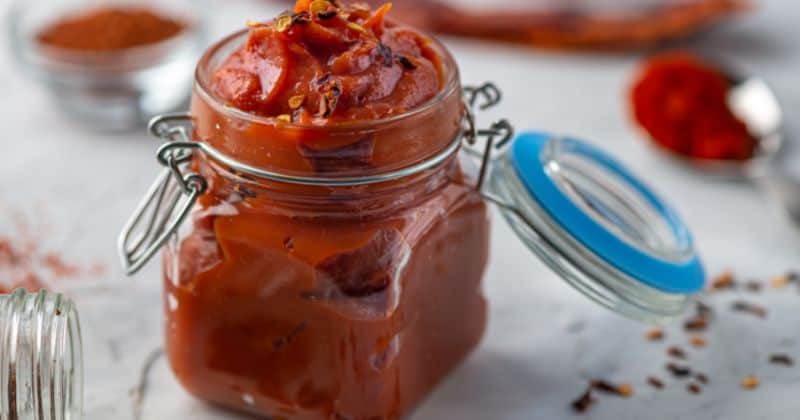Have you ever noticed that some Korean dishes have a hint of sweetness? If you’re scratching your head wondering why is korean food so sweet, you’re not alone!
In this article, we’ll explore the reasons behind the sweet flavors in Korean cuisine. Read on to uncover the secrets behind korean food too sweet and learn more about the unique culture of Korean cooking.
The Influence of Western Tastes
The increasing popularity of Korean food worldwide has led to new twists on traditional dishes. As Korean cuisine expands globally, chefs have started adapting recipes to appeal to Western tastes.
One way they achieve this is by making some Korean dishes sweeter. The harmonious blend of flavors in Korean cooking – spicy, salty, sour, and sweet – caters well to Western palates. The result? Unique fusions and new takes on classics like bibimbap and kimchi stew.
While this Western influence has added diversity, traditional Korean dishes still maintain authenticity. The incorporation of new flavors simply enhances traditional recipes rather than overpowers them.
Do Traditional Korean Foods Taste Sweet?
When you think of quintessential Korean dishes, sweetness may not immediately come to mind. Many traditional Korean foods emphasize umami, sour, and spicy flavors rather than sweet ones.
However, subtle sweet notes can complement the complex layers of tastes in Korean cuisine. Let’s explore the role of sweetness in traditional cooking.
Savory First, Sweet Second
For most traditional Korean recipes, sweetness takes a backseat to savory umami flavors. Classic dishes like kimchi, bulgogi, and bibimbap focus on sour, salty, and spicy tastes first.
Sweetness is used sparingly, rounding out the overall flavor profile. A touch of sugar or honey balances pungent, funky flavors in fermented items like gochujang chili paste or doenjang soybean paste.
So while sweetness isn’t the star in traditional cooking, it still has an important supporting role.
Sweet Korean Ingredients

Specific ingredients used in Korean cooking also lend natural sweetness to dishes. Here are some examples:
- Gochujang: This fermented red chili paste has a slight sweet kick. It adds depth to stews, marinades, and more.
- Doenjang: A fermented soybean paste that provides a sweet, salty flavor. It’s used in soups and stews.
- Soy Sauce: Korean soy sauce is sweeter and less salty than Chinese varieties. It balances flavors in marinades, dipping sauces, and beyond.
- Rice and Grains: Desserts with rice flour or sweet rice provide subtle sweetness. Think rice cakes and porridge.
- Fruit: Fruits like yuja (citrus), jujubes (dates), and persimmons are incorporated into Korean desserts.
These are just a few examples of ingredients that add natural sweetness to Korean cooking.
Sweetness for Balance
Another reason behind the sweet taste is that Koreans use it to create balanced flavors. A touch of sweetness harmonizes the spicy, salty, and sour notes in dishes like kimchi and stews.
Rather than making food overly sweet, Korean chefs use restrained amounts of sugar, honey, and sweet condiments. This results in the complex blend of tastes that Korean cuisine is loved for worldwide.
Naturally Sweet Winter Foods
Korean winter foods highlight sweet flavors through seasonal ingredients:
- Ginger: Adds a spicy, sweet kick to soups and stews.
- Sweet potatoes: Roasted street food snacks that warm you up with natural sweetness.
- Patjuk: Sweet red bean porridge, perfect for the winter solstice.
- Tangerines: Bright, sweet flavor to liven up desserts and snacks.
- Grains: Sweet rice porridges and drinks utilizing fermented rice.
As you can see, natural sweeteners abound in Korean cold weather cuisine. These foods provide warmth along with a sweet dose of nostalgia.
Traditional Korean Desserts

While less common than savory dishes, traditional Korean desserts do highlight sweet flavors. Here are some examples:
- Patbingsu: A summertime favorite, this shaved ice treat features sweetened red beans and fruit toppings.
- Bungeoppang: These fish-shaped pastries have a sweet red bean filling. The perfect snack!
- Yakgwa: A classic Korean cookie made with wheat flour, sesame oil, and a touch of sweet rice wine.
- Hangwa: Assorted Korean confections served during the holidays and special occasions.
Though everyday Korean food isn’t very sweet, these traditional desserts definitely satisfy a craving for something sugary!
How to Order Less Sweet Korean Dishes
Want to enjoy delicious Korean cuisine without an overload of sweetness? Here are some key phrases to request less sugar when dining out or ordering food:
Ask for Less Sugar
Use the phrase “Jejung-eul ddeon-eisseoyo” (제정-을 떠네이써요). This means “Please reduce the amount of sugar.”
Request Less Sweetness Overall
Say “Gogu-reum-eul ddeon-eul-easseoyo” (고구룸-을 떠널-어써요) to ask them to make it less sweet in general.
Specify the Dish
To ask for a particular item to be less sweet, say:
“XXX-guk-eul ddeon-eul-easseoyo”
Simply insert the name of the dish in place of XXX.
For example:
“Kimchi-jeon-guk-eul ddeon-eul-easseoyo” means “Please make the kimchi soup less sweet.”
Other Useful Phrases
Here are some additional phrases that may be helpful:
- “Kkeopjjim-eul wanbyeonghaejuseyo” = Go lighter on the sweet glaze
- “Danggeun-jeong-eul jom deonjyeoss-eoyo” = Use less sugar this time
- “Chagang-i masisseoyo” = It’s too sweet for me
The key is being polite yet direct. With these Korean phrases, you can request sweeter moderation and enjoy the complex flavors of the cuisine.
How to Cut Back on Sweetness in Korean Cooking
Is Korean food hitting your taste buds with too much sweetness? Looking for ways to tone down the sugar without losing the delicious flavors? Read on for tips to reduce sweetness in Korean cuisine.
Use Less Sugar and Honey
One easy fix is to use smaller amounts of sugar or honey in marinades, dipping sauces, and glazes. You’ll still get a touch of sweetness without going overboard.
Opt for Savory Seasonings
Skip the sugar and drizzle Korean barbecue with sesame oil, soy sauce, garlic, and ginger instead. Let the umami flavors shine through.
Reduce Sweet Ingredients
Cut back on the fruit, juice, sweet rice, or sweet condiments like gochujang. A little goes a long way.
Choose Lower-Sugar Versions
Opt for unsweetened kimchi or low-sugar doenjang (fermented bean paste) to avoid excess sweetness.
Balance Sweet with Sour or Spicy
Counteract sweet flavors by adding a splash of vinegar or pinch of chili flakes. The contrast keeps tastes balanced.
Use Herbs and Spices
Flavor food with aromatic herbs and spices instead of defaulting to sugar. Things like basil, cinnamon, and sesame pack lots of flavor.
Try Different Types of Sugar
Swap in brown sugar or raw sugar for a deeper, less sweet taste than white sugar.
Incorporate Acidic Ingredients
Lemons, limes, and other sour fruits will help lessen the perception of sweetness.
Avoid Sweet Sauces
Rather than sugary glazes, let ingredients shine with sesame oil or a salt brine.
Change Up Cooking Methods
Try techniques like grilling and stir-frying. They caramelize natural sugars in food, enhancing flavor without adding sweetness.
In Summary
So why exactly is Korean food so sweet? In short, it comes down to cultural preferences, fresh ingredients, and the clever balance of flavors. A touch of sweetness complements other tastes to create the unique Korean flavor profile we all love.
The next time you bite into a Korean dessert or simmering stew, you’ll have a deeper appreciation for the sweetness. Now that you know the secrets behind the flavors, you can better understand the food on your plate!





